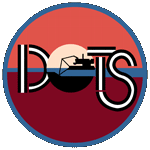

Source: Meador JP, CA Krone, DW Dyer, U Varanasi. 1997. Toxicity of sediment-associated tributyltin to infaunal invertebrates: Species comparison and the role of organic carbon. Marine Environmental Research 43:219-241.
Study aim: "This study was designed to assess and compare the responses of selected benthic infauna to sediment containing tributyltin and to examine the effects of sediment organic carbon on the control of toxicant exposure. We were also interested in determining the major route of TBT uptake and therefore tested species with different modes of feeding for comparison. We tested the amphipods Rhepoxynius abronius (meiofaunal predator) and Eohaustorius washingtonianus (detritivore), and a polychaete, Armandia brevis (nonselective deposit feeder)."
| Genus Species | analyte | Study | Lipid % | ug/kg lipid | TOC % | ug/kg TOC | BSAFR | BSAFC | Tissue | Moisture | Sediment | Sediment Locale | Subdivision, Country | Chemical Spiked | EXP duration | Source; Station | Note | CAS | Reference | DOI | exit |
|---|---|---|---|---|---|---|---|---|---|---|---|---|---|---|---|---|---|---|---|---|---|
| Armandia brevis | Tributyltin chloride | Lab | N/I | N/R | N/I | N/R | 2.3 | -- | whole body | dry (organism/sediment) | Amended | West Beach | Washington, United States of America | Yes | 10 d | N/I | BAFloc is BSAF | 1461-22-9 | BSAF2850 | doi.org/10.1016/0141-1136(96)00090-6 | Google Scholar |
| Eohaustorius estuarius | Tributyltin chloride | Lab | N/I | N/R | N/I | N/R | 4.6 | -- | whole body | dry (organism/sediment) | Amended | West Beach | Washington, United States of America | Yes | 41 d | N/I | BAFloc is BSAF | 1461-22-9 | BSAF2850 | doi.org/10.1016/0141-1136(96)00090-6 | Google Scholar |
| Rhepoxynius abronius | Tributyltin chloride | Lab | N/I | N/R | N/I | N/R | 0.41 | -- | whole body | dry (organism/sediment) | Amended | West Beach | Washington, United States of America | Yes | 10 d | N/I | BAFloc is BSAF | 1461-22-9 | BSAF2850 | doi.org/10.1016/0141-1136(96)00090-6 | Google Scholar |